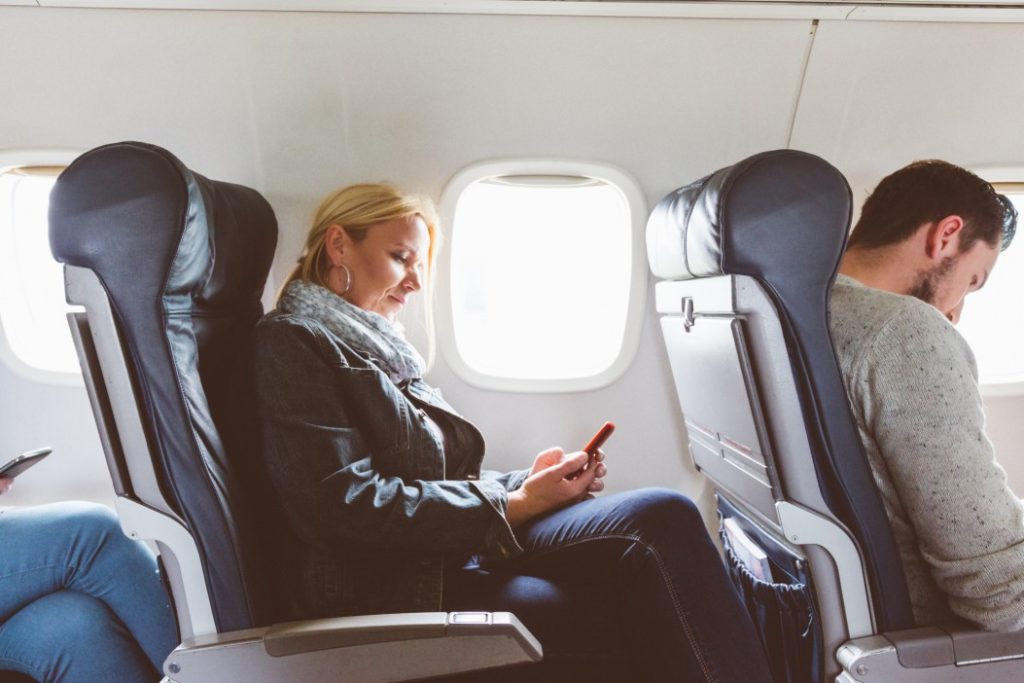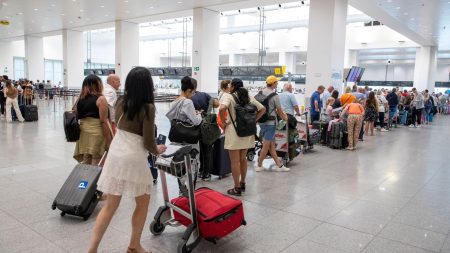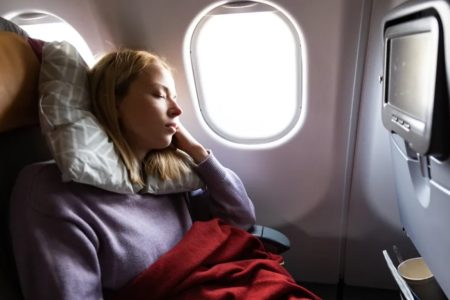The eternal conundrum of airplane etiquette – to recline or not to recline – has once again taken center stage, sparked by a viral TikTok video showcasing a novel, albeit controversial, method to prevent seat encroachment. A user, @clareduggan1982, demonstrated using a Pringles can as a makeshift stopper, wedging it between her tray table and the seat in front. This ingenious yet contentious hack ignited a fierce debate online, with opinions ranging from applause for the clever solution to outright condemnation for interfering with another passenger’s right to recline. The core issue lies in the shared, confined space of airplane cabins, where the desire for personal comfort often clashes with the needs of fellow travelers. This seemingly simple act of reclining a seat becomes a microcosm of broader societal discussions surrounding personal space, shared resources, and the unspoken rules of air travel.
The Pringles can strategy hinges on the assumption that the tray table remains stationary even when the seat in front reclines. However, this is not always the case, leading to another layer of disagreement within the online discourse. Some commenters pointed out that on many aircraft, the tray table is attached to the seat and moves in tandem with it, rendering the Pringles can strategy ineffective. Others countered, claiming their experiences differed, citing instances where tablets became trapped or drinks spilled due to the disparity in movement between the seat and the tray. This technical detail highlights the complexities of the issue and the variations in aircraft design, further fueling the ongoing debate. The lack of a universal standard for tray table functionality contributes to the ambiguity and fuels passenger frustration.
Beyond the mechanics of tray tables, the central question remains: who has the right to control the limited space in an airplane cabin? Proponents of reclining argue it’s a feature offered by the airline and therefore within their rights to utilize. They see it as a matter of personal comfort, especially on long-haul flights. Opponents, on the other hand, emphasize the impact on the passenger behind, often citing reduced legroom and difficulty using the tray table, especially for taller individuals or those with disabilities. The lack of clear guidelines from airlines further exacerbates the problem, leaving passengers to navigate these uncomfortable situations with varying degrees of politeness and frustration. The absence of a universal standard leaves the responsibility on individual passengers to negotiate and compromise, further emphasizing the conflict.
The TikTok video and the ensuing online discussion reflect a larger societal trend: the struggle to balance individual needs with the consideration of others in shared spaces. Air travel, with its inherent constraints and close proximity, amplifies these tensions. The limited space, coupled with the stress of travel, often creates an environment where even minor inconveniences can escalate into major conflicts. The anonymity afforded by the online world can also embolden extreme reactions, as evidenced by some of the more vitriolic comments in the TikTok thread. The debate highlights the need for greater clarity and communication from airlines regarding seat reclining policies and passenger etiquette.
The discussion surrounding reclining airplane seats echoes similar debates about shared resources in other contexts. From public transportation to shared office spaces, the balance between individual comfort and communal consideration is a recurring theme. The lack of clear societal norms or enforceable rules often leads to conflict and resentment. The Pringles can incident serves as a microcosm of this larger issue, highlighting the need for greater empathy and understanding in navigating shared spaces. Developing more effective strategies for communication and conflict resolution in these situations is crucial for a more harmonious collective experience.
Ultimately, the “to recline or not to recline” dilemma underscores the need for a more nuanced conversation about air travel etiquette. While the Pringles can hack may not be a universally accepted solution, it has sparked a valuable dialogue about passenger rights, personal space, and the challenges of sharing limited resources. Airlines, passengers, and even regulatory bodies need to collaborate on finding solutions that prioritize both individual comfort and the overall passenger experience. This could involve clearer guidelines on reclining etiquette, innovative seat designs that maximize space, or even a tiered pricing system that reflects the varying levels of legroom offered. The goal should be to create a travel environment that is both comfortable and respectful for all passengers.











